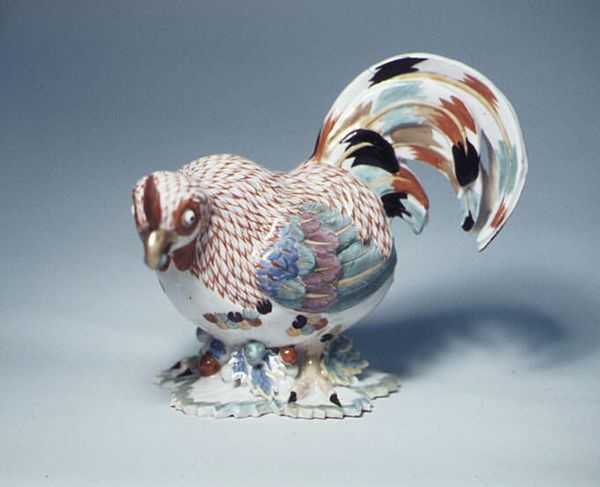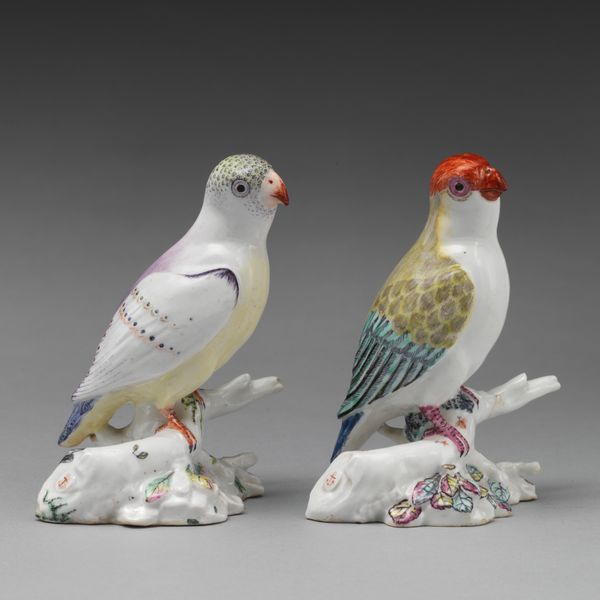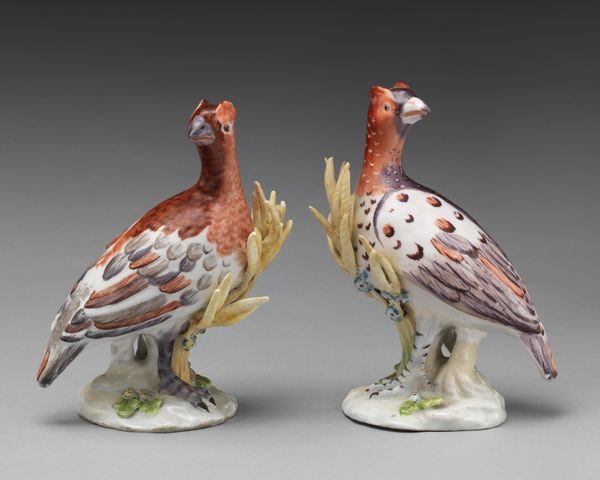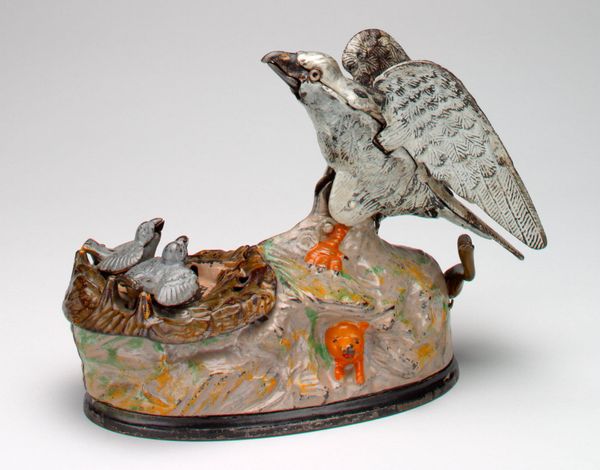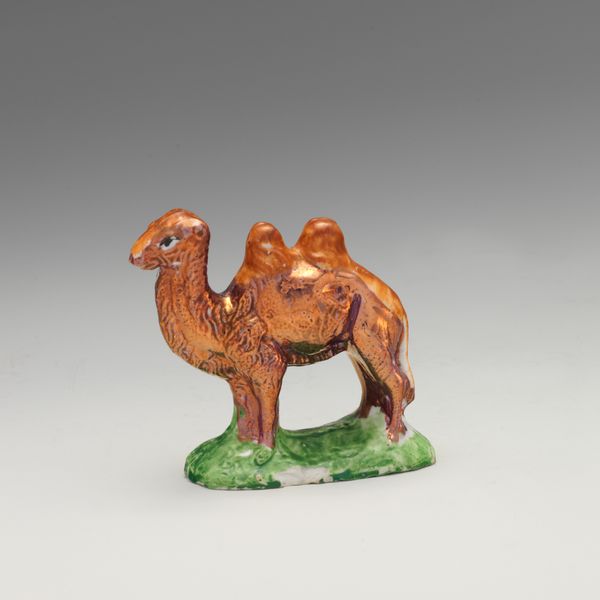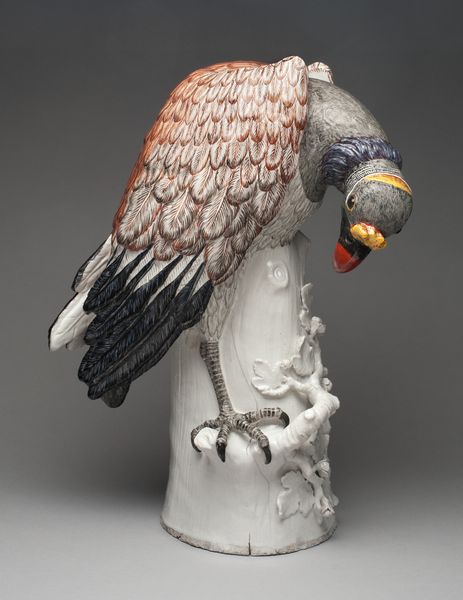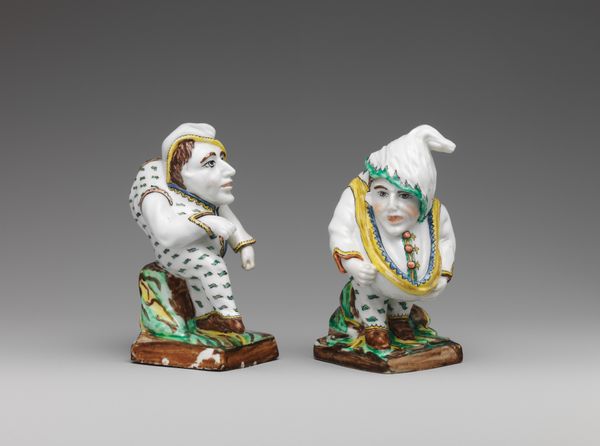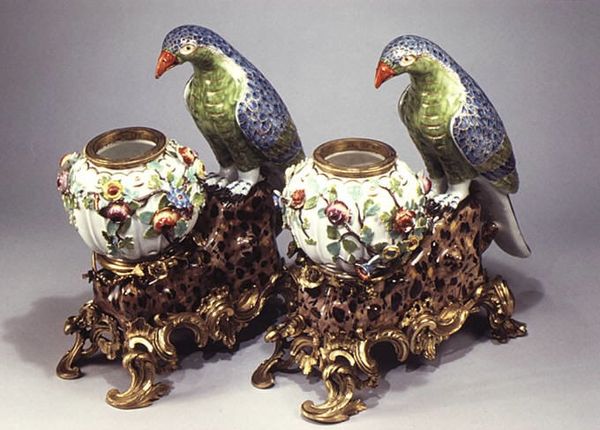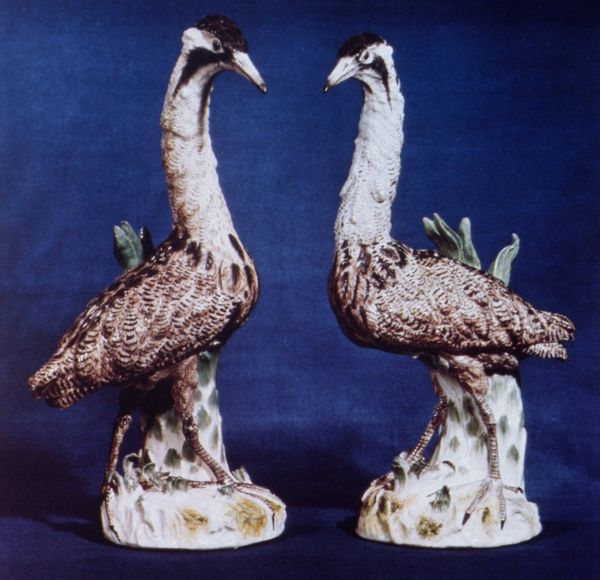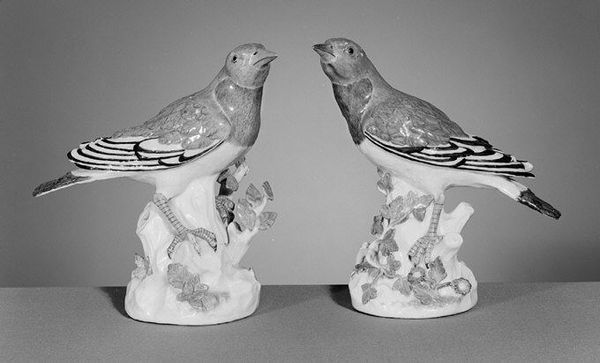
ceramic, porcelain, sculpture
#
sculpture
#
ceramic
#
porcelain
#
figuration
#
sculpture
#
decorative-art
#
rococo
Dimensions: 6 3/8 × 7 1/2 in. (16.2 × 19.1 cm)
Copyright: Public Domain
Editor: This porcelain sculpture, dating from 1727 to 1737, is titled "Chinese Rooster," and was made by Meissen Manufactory. The pair looks quite stately, almost comical in their seriousness. I am curious, what do you find interesting about them? Curator: What I find compelling is how these roosters speak to the European fascination with and appropriation of Chinese aesthetics during the Rococo period. The Meissen factory was at the forefront of porcelain production in Europe, attempting to replicate the coveted wares from the East. Editor: So they weren’t necessarily trying to perfectly imitate Chinese art? Curator: Exactly. The result is a hybrid: a European interpretation of Chinese style. The rooster itself, though a familiar subject in Chinese art, takes on a new character here, imbued with a certain European sensibility and, importantly, serving a different function in society. What do you imagine that might be? Editor: Maybe they weren't functional objects, but more like status symbols or decorative pieces? Curator: Precisely. These weren’t just beautiful objects, they signified wealth, refinement, and a sophisticated understanding – or perhaps misunderstanding – of another culture. They highlight the power dynamics inherent in cultural exchange, how European power structures shaped the consumption and interpretation of Chinese art. Editor: That’s fascinating. I hadn’t considered the power dynamics at play when looking at decorative arts like these. It really makes you think about the history behind these objects and who had access to them. Curator: Indeed. The ‘Chinese Rooster’ is far more than just a charming porcelain figure; it's a symbol of cultural exchange and social positioning in 18th-century Europe. It's taught me a lot about considering context and audience when thinking about artwork.
Comments
No comments
Be the first to comment and join the conversation on the ultimate creative platform.
